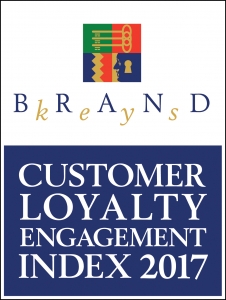
Soaring customer expectations are creating an increasingly challenging environment for brands seeking engagement, according to the 22nd annual Brand Keys Customer Loyalty Engagement Index® (CLEI).
Brand engagement is a measure of how well a brand meets expectations that consumers hold for the path-to-purchase drivers in a given category. Brands are measured against a Category Ideal (100% of what consumers expect). Brands best meeting consumers’ expectations generate loyalty and profits. Brands that cannot meet expectations lose customers and market share.
This year’s CLEI examined 83 categories including 740 brands – everything from Automotive and OTC Allergy Medications to Computers, Fast-Casual Dining, Retail, Smartphones, and Alcoholic Beverages, with brand leadership shifting dramatically in 58% of the categories. For a complete list of the CLEI’s 83 categories click this link.
Cross-category, expectations increased +23%. Brands improved by only 4%, which leaves an enormous gap between what consumers want and what brands deliver. Expectations grew the most in 1) Online: Social Networking and Entertainment (+35%), 2) Technology (+32%), 3) B2B: Services and Equipment (+30%), 4) Cosmetics (+28%), and 5) Personal Products & CPG (+26%). (Interestingly, there was only one category where expectations virtually stood still. Non-alcoholic beverages were up 9%, the lowest expectation growth in years and the reason selling soft drinks has become so problematic).
“Brand engagement” is pretty straightforward. There’s an Ideal for every product and service; it’s the yardstick consumers use to measure brands. Defining your category’s Ideal is where it gets tricky. The process is more emotionally-based than rational, so defining the Ideal, and identifying what consumers really expect has to be more penetrating and subtle than the typical 10-point scale survey. Below-the-radar psychological metrics are what you need, because today’s consumer does not behave as he or she says, does not say what he or she really thinks, and does not think what he or she feels.
That’s because consumers “talk” among themselves before they talk to brands, with social networking super-charging expectations and that results in massive gaps between what people really want and what brands deliver. Unfortunately, that also creates massive gaps among marketers about what actually drives brand engagement.
The Ideal describes the precise path-to-purchase drivers, how the consumer will view the category, compare brands and how they will engage with the brand, buy, and remain loyal. Most marketers look at the world through a brand lens. It’s their brand, after all. The consumer, on the other hand, looks through a category-lens and that dichotomy creates problems when marketers try to engage consumers. Drivers are category-specific since consumers don’t buy smartphones in the same way they buy cosmetics or pizza so static ratings lists can be very misleading!
This year 49,168 consumers, 16 to 65 years of age from the nine US Census Regions, self-selected the categories in which they are consumers and the brands for which they are customers. Seventy (70%) percent were interviewed by phone, twenty-five (25%), percent via face-to-face interviews (to identify and include cell phone-only households), and 5% online.
Of the 740 brands included in the 2017 CLEI, perennial brand engagement experts rose to the tops of their categories again this year: Avis, JetBlue, Hyundai and Ford, Dunkin’ and Starbucks, Apple, Discover and American Express, GEICO, Konica-Minolta, Amazon.com, Domino’s, Facebook, Google, Chanel and AT&T.
Smart brands are learning that engagement is the best route to profitability, and in established categories, 2017 revealed some newcomers at the top of their categories, showing up as engagement champions: Allegra, Chase, Coors, 5 Guys Burgers & Fries, L’Oréal and Kiehl’s, Sabercat, Magnum Ice Cream, Hyatt, State Farm, Major League Baseball (MLB), Trader Joe’s, Zara, Nordstrom, Johnnie Walker and Fidelity.com.
We added 11 categories, with first-time engagement winners: Red Bull, Doritos, Fritos, Planters, FOX News, LEGOS, Chobani and Yoplait.
Bottom line? Brands that can best fill the expectation gap win.. And, as these metrics are predictive of consumer behavior, results will show up in market share and profits in the New Year. Want to see how all this plays out in the marketplace? Give a listen here.
Find out more about what makes customer loyalty happen and how Brand Keys metrics is able to predict future consumer behavior: brandkeys.com. Visit our YouTube channel to learn more about Brand Keys methodology, applications and case studies.
Share this: